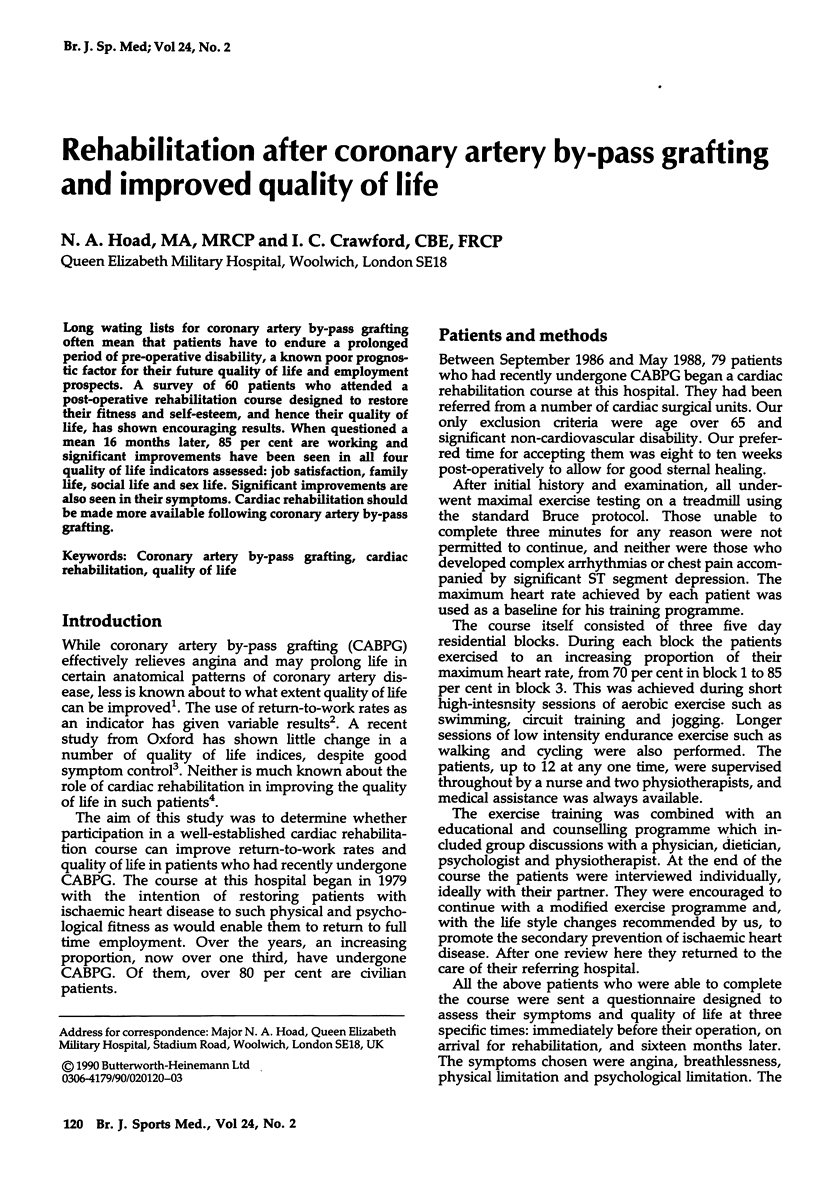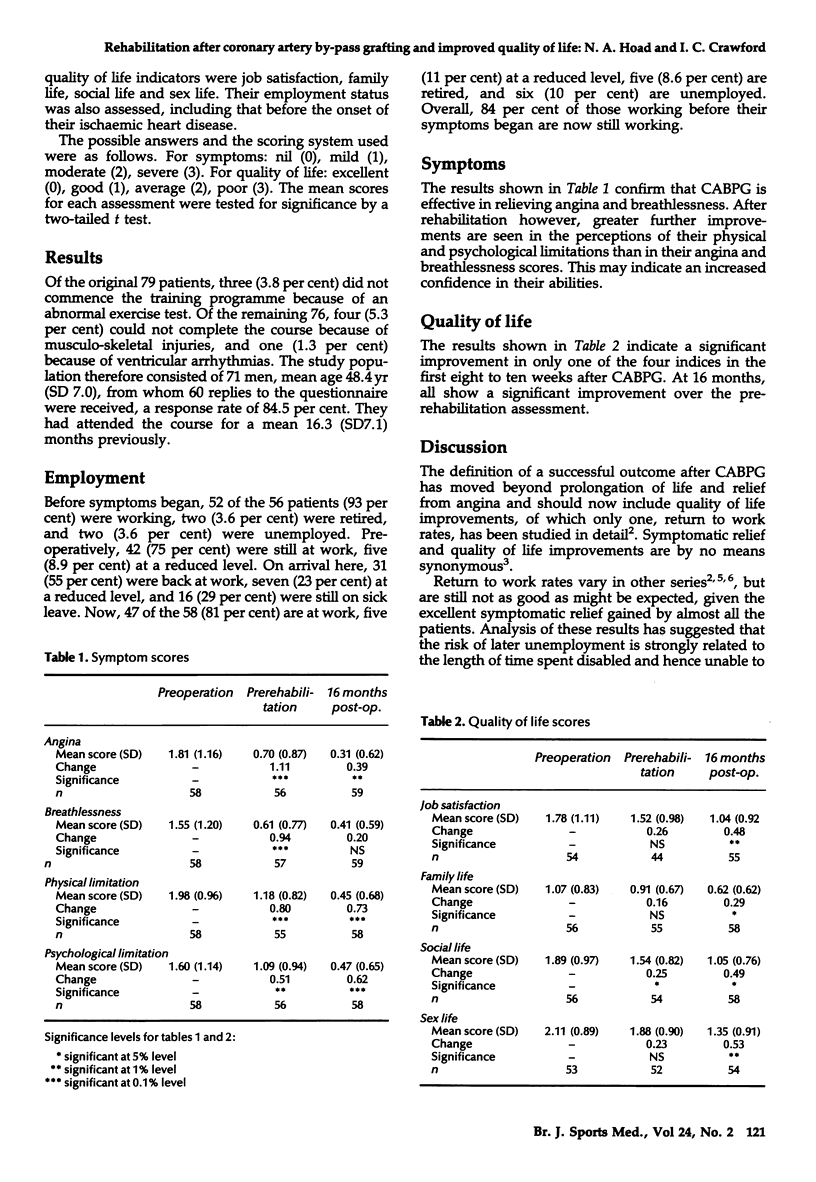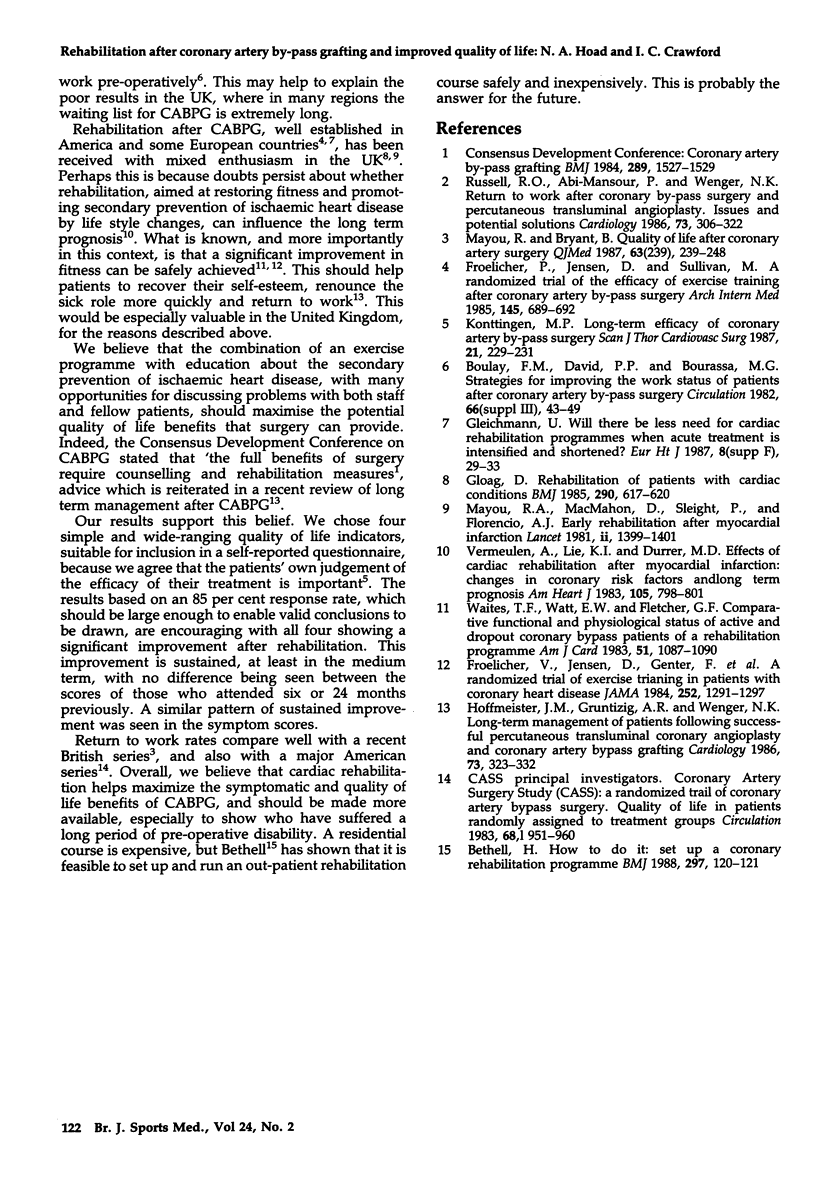Abstract
Long waiting lists for coronary artery by-pass grafting often mean that patients have to endure a prolonged period of pre-operative disability, a known poor prognostic factor for their future quality of life and employment prospects. A survey of 60 patients who attended a post-operative rehabilitation course designed to restore their fitness and self-esteem, and hence their quality of life, has shown encouraging results. When questioned a mean 16 months later, 85 per cent are working and significant improvements have been seen in all four quality of life indicators assessed: job satisfaction, family life, social life and sex life. Significant improvements are also seen in their symptoms. Cardiac rehabilitation should be made more available following coronary artery by-pass grafting.
Full text
PDF


Selected References
These references are in PubMed. This may not be the complete list of references from this article.
- Bethell H. J. How to set up a coronary rehabilitation programme. BMJ. 1988 Jul 9;297(6641):120–121. doi: 10.1136/bmj.297.6641.120. [DOI] [PMC free article] [PubMed] [Google Scholar]
- Froelicher V., Jensen D., Genter F., Sullivan M., McKirnan M. D., Witztum K., Scharf J., Strong M. L., Ashburn W. A randomized trial of exercise training in patients with coronary heart disease. JAMA. 1984 Sep 14;252(10):1291–1297. [PubMed] [Google Scholar]
- Froelicher V., Jensen D., Sullivan M. A randomized trial of the effects of exercise training after coronary artery bypass surgery. Arch Intern Med. 1985 Apr;145(4):689–692. [PubMed] [Google Scholar]
- Gleichmann U. Will there be less need for cardiac rehabilitation programmes when acute treatment is intensified and shortened? Eur Heart J. 1987 Sep;8 (Suppl F):29–33. doi: 10.1093/eurheartj/8.suppl_f.29. [DOI] [PubMed] [Google Scholar]
- Gloag D. Rehabilitation of patients with cardiac conditions. Br Med J (Clin Res Ed) 1985 Feb 23;290(6468):617–620. doi: 10.1136/bmj.290.6468.617. [DOI] [PMC free article] [PubMed] [Google Scholar]
- Hoffmeister J. M., Grüntzig A. R., Wenger N. K. Long-term management of patients following successful percutaneous transluminal coronary angioplasty and coronary artery bypass grafting. Cardiology. 1986;73(4-5):323–332. doi: 10.1159/000174024. [DOI] [PubMed] [Google Scholar]
- Mayou R., Bryant B. Quality of life after coronary artery surgery. Q J Med. 1987 Mar;62(239):239–248. [PubMed] [Google Scholar]
- Russell R. O., Jr, Abi-Mansour P., Wenger N. K. Return to work after coronary bypass surgery and percutaneous transluminal angioplasty: issues and potential solutions. Cardiology. 1986;73(4-5):306–322. doi: 10.1159/000174023. [DOI] [PubMed] [Google Scholar]
- Vermeulen A., Lie K. I., Durrer D. Effects of cardiac rehabilitation after myocardial infarction: changes in coronary risk factors and long-term prognosis. Am Heart J. 1983 May;105(5):798–801. doi: 10.1016/0002-8703(83)90243-0. [DOI] [PubMed] [Google Scholar]
- Waites T. F., Watt E. W., Fletcher G. F. Comparative functional and physiologic status of active and dropout coronary bypass patients of a rehabilitation program. Am J Cardiol. 1983 Apr;51(7):1087–1090. doi: 10.1016/0002-9149(83)90350-8. [DOI] [PubMed] [Google Scholar]


